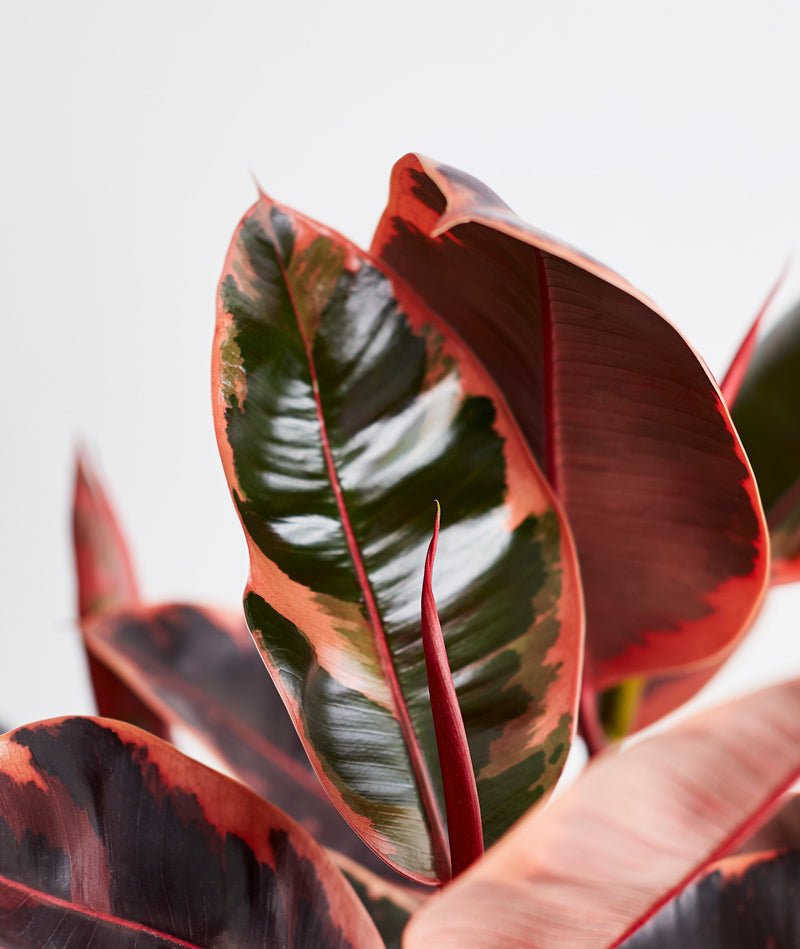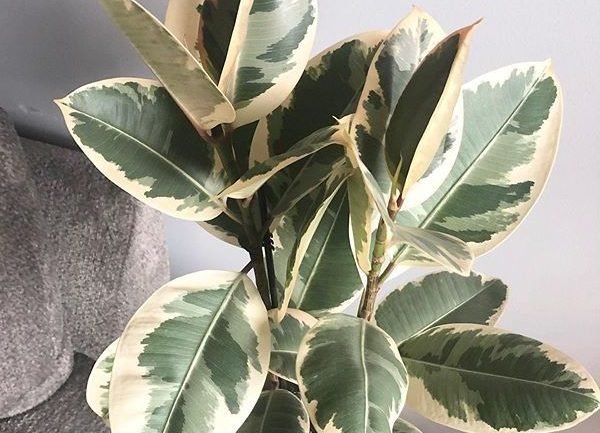Plant focus: the rubber plant
Want to know more about your favorite houseplants? Then join us on a deep dive into the lives of popular indoor plants. Let’s start with the Ficus Elastica.
Commonly known as a rubber plant or rubber fig, the Ficus Elastica comes in a number of varieties. From the emerald Robusta to the variegated cream-edged Tineke, they all have stunning foliage. One of our favorites is the Ficus Elastica Abidjan – with deep green leaves veined in pink, this houseplant is a real head-turner.
You might have spotted these green beauties on the covers of interior design magazines or influencers’ social media feeds. Its large, glossy leaves make an elegant statement in any home or workspace. And while the rubber fig looks like a diva, this plant isn’t fussy when it comes to maintenance.
One of our favorite ficus elastica varieties is the abidjan, with glossy, dark leaves and a pink stem, its a great choice for interior design.
Ficus Elastica origins
Rubber plants are native to the tropical forests of India, Myanmar, Malaysia, and Indonesia. They have been grown as houseplants in temperate climates since the late 1800s. While an indoor Ficus can reach heights of around 3 meters, these plants grow up to 40 meters tall in their natural habitat.
Wild rubber figs send out aerial roots that form part of the trunk when they reach the ground. In the Indian state of Meghalaya, locals knot these roots into living bridges across rivers and ravines – but don’t try this at home!
An example of a giant rubber tree grown naturally outside. Their trunks can grow to enormous sizes!
Rubber plant care
These easy-care houseplants are a great option for new and experienced plant parents. Rubber figs prefer bright filtered light, but can tolerate both lower light and a couple of hours of direct sun. If variegated rubber plants get too much sunshine their colors won’t show as distinctly.
As in its forest home, the Ficus Elastica likes a damp environment. Position your rubber fig away from heaters or drafty windows that could dry them out. They usually like a drink every 1-2 weeks, but won’t enjoy sitting in water – let the top half of the potting mix dry out between waterings.
Common ficus elastica varieties:
Ficus elastica melany. Available in the Plant Store.
Ficus elastica robusta
Ficus elastica ruby
Ficus elastica tineke
Ficus elastica abidjan
Common issues with indoor rubber plants
Rubber plants are fairly adaptable, but if their foliage starts to droop it means they’re not happy. Cold drafts, dry air, and too little light can all cause drooping. Leaf discoloration is another common problem and is usually a sign of either over (or under) watering. Too much moisture can cause root rot and encourages fungus gnats.
Wipe their leaves with a damp cloth to keep them free from dust, but be gentle when you do this. If the foliage or stems are damaged, rubber plants release a sticky sap that can cause skin irritation and is toxic to animals – so keep your Ficus Elastica somewhere out of reach if you have furry friends.
Ficus elastica can be easily propagated either with a leaf or stem cutting, which is a great way to grow your collection or save damaged stems.
Plantclub.io provides you and your colleagues with the benefits of plants, wherever you work. Rent office plants and transform your space into a green oasis, with flexible monthly membership options to suit your size. Diversify your employee perks with a dedicated company store, where you can give green gifts and your team can buy plants for their home office. Book a time to chat with us today.









